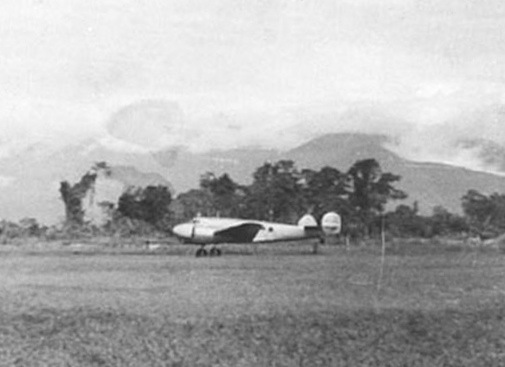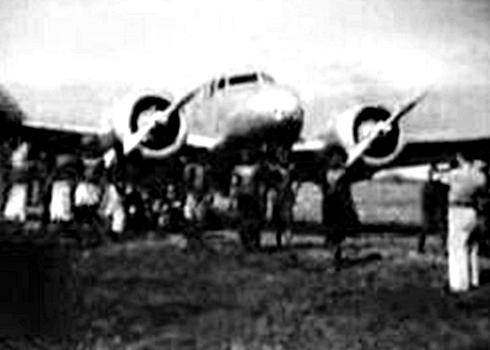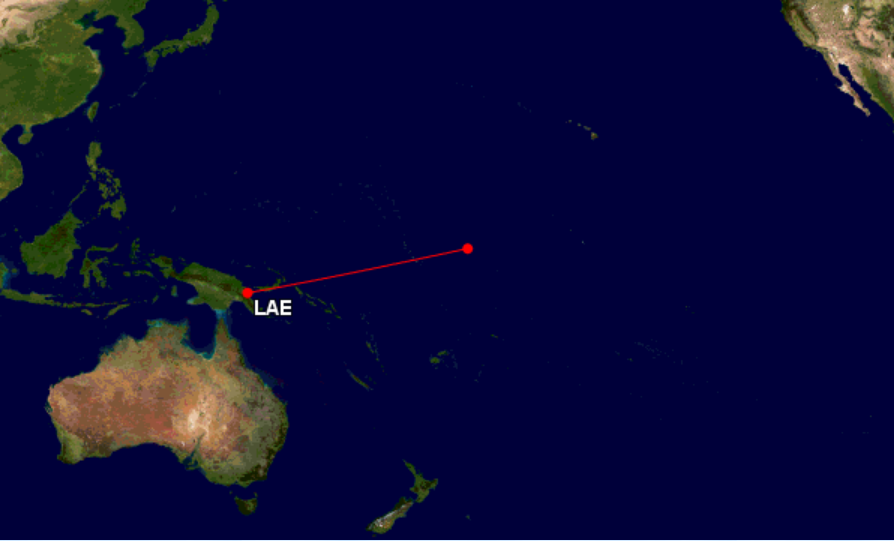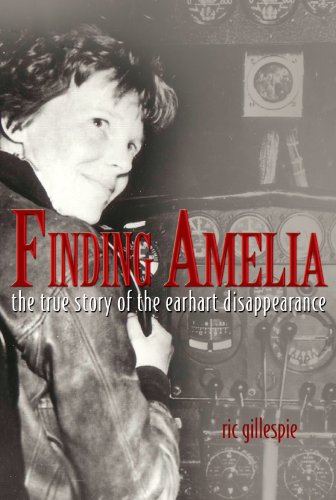
![]() 2 July 1937: At approximately 10:00 a.m., local time, Amelia Earhart and Fred Noonan departed Lae, Territory of New Guinea, aboard their Lockheed Electra 10E Special, NR16020, enroute to Howland Island, 2,243 nautical miles (2,581 statute miles/4,154 kilometers) east-northeast across the South Pacific Ocean. The airplane was loaded with 1,100 gallons (4,164 liters) of gasoline, sufficient for 24 to 27 hours of flight.
2 July 1937: At approximately 10:00 a.m., local time, Amelia Earhart and Fred Noonan departed Lae, Territory of New Guinea, aboard their Lockheed Electra 10E Special, NR16020, enroute to Howland Island, 2,243 nautical miles (2,581 statute miles/4,154 kilometers) east-northeast across the South Pacific Ocean. The airplane was loaded with 1,100 gallons (4,164 liters) of gasoline, sufficient for 24 to 27 hours of flight.
They were never seen again.


HIGHLY RECOMMENDED: FINDING AMELIA: The True Story of the Earhart Disappearance, by Ric Gillespie. Naval Institute Press, Annapolis, MD, 2006.
© 2021, Bryan R. Swopes

All the theories that she and her navigator survived somehow are false hopes. Simply tan out of fuel and crashed into the sea. Maybe one day these deep sea dives will find the airplane.
TDiA found “FINDING AMELIA: the true story of the Earhart disappearance,” by Ric Gillespie. Naval Institute Press, Annapolis, MD, 2006, to be very convincing.
Across the Pacific with just one generator (Right engine) and one radio direction finder which she hadn’t properly calibrated and tested before flight.
With all the radio transmissions from USCG ship Itasca near Howland, it would have been a no-brainer for Earhart to get a bearing on the ship within a 100 miles at altitude had she properly trained to use the Bendix equipment. The tube radios draw a lot of amps and she was stupid not to have a back up DF and a 2nd generator installed on the left engine for additional (and back-up) electrical power. She was more of a publicity hound than an aviator.
Glueball,
How do you really know Amelia thinking 86 years ago? Publicity hound? She was out to make history, hence, it’s all aviation history now, ant change it.
Did she and Fred Noonan make mistakes? No doubt. But this was 1937, aviation was still very young and I’m sure many learned from her mistakes. One of those was Geraldine Mock who did the same solo flight following Earhart path except she changed the pacific route… learning from Amelia. Ms. Mock also did it in a single engine Cessna!
Should have Amelia added a second generator on the left engine and a redundant DF, possibly. But that adds weight and additional weight increases fuel burn.
I bet you Amelia calculated those risks. Aviation is all about mitigated risks even back then.
My thinking is they simply navigated wrong and got lost and ran out fuel. Howland island is such a tiny spec in the vast pacific. If you’ve ever flown the pacific you’d know. For sure the nav aids back then were minimal. I understand the coast guard had a ship then pushing a beacon but it just wasn’t enough.
Amelia and Fred were very courageous aviation pioneers.
For sure I will read Gillespie book.
Chris, I highly recommend Gillespie’s book, “Finding Amelia.” It is thoroughly researched and documented. My first edition included a CD with with all of the documentation.
Bryan, thank you. Ordered the book on Amazon yesterday. Can’t wait to read it.
Pretty cool about the CD!
Chris, when I first read it, I made a point of reading every footnote, and I read every document on the CD.
Gillespie is the publicity hound. Do some research on him.
Is that a criticism of Mr. Gillespie or of his book?
Amelia and Fred cross the threshold of legend – missing, officially.
Why didn’t the Navy put the DF on the charger. Had plenty of time to recharge it. And if the Navy was involved why didn’t they have more ships aline from their takeoff position to the Island ?
So many questions that cannot be answered today. Planning by Earhart, et al, left a lot to be desired. If TDiA recalls correctly, some of the radio equipment aboard the Electra did not operate on the same frequencies as those aboard the Coast Guard Cutter Itasca. But the USCG radio operators clearly heard radio calls from the airplane, thinking that it was so close that some actually ran on deck to look for it, thinking it must be very nearly overhead.